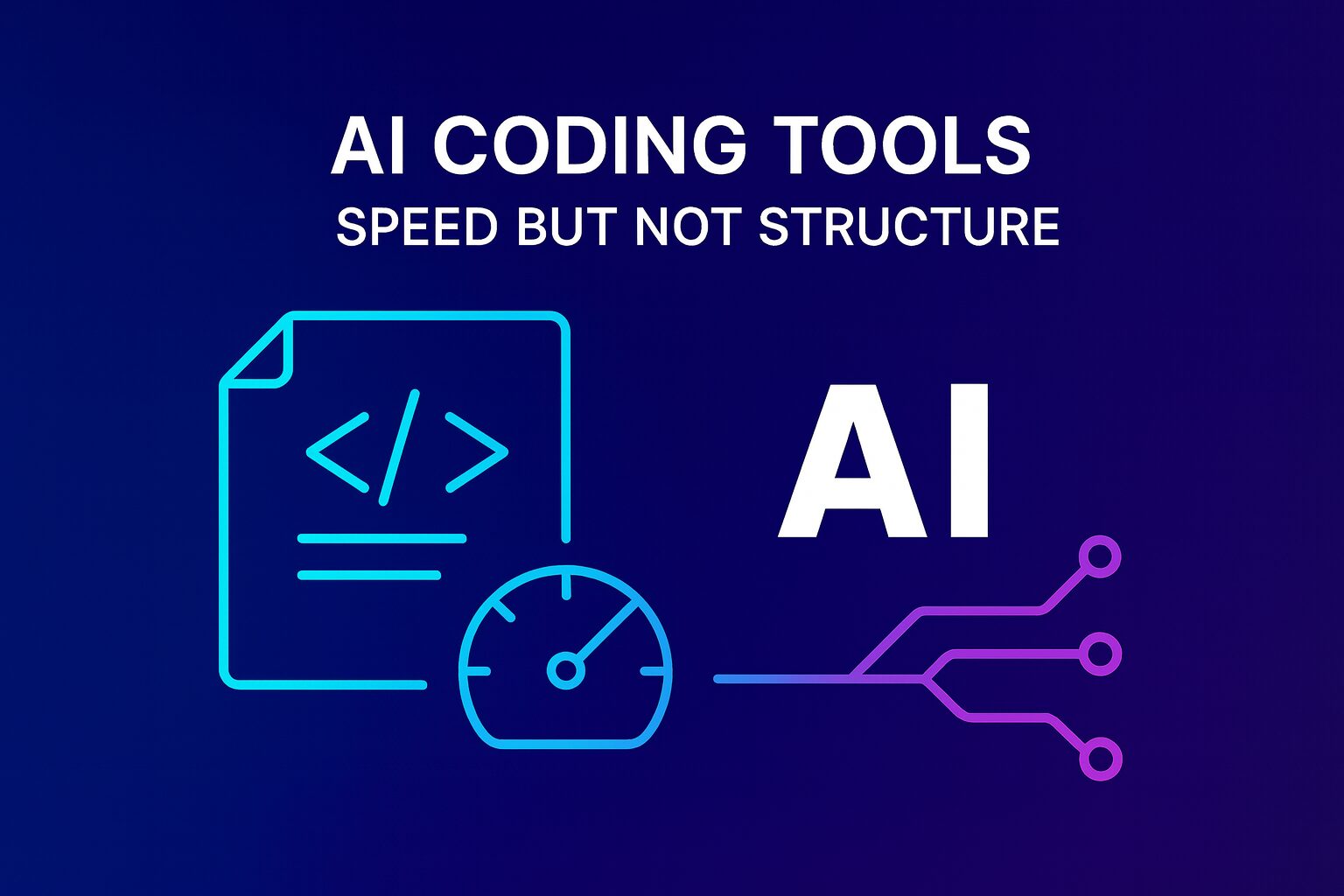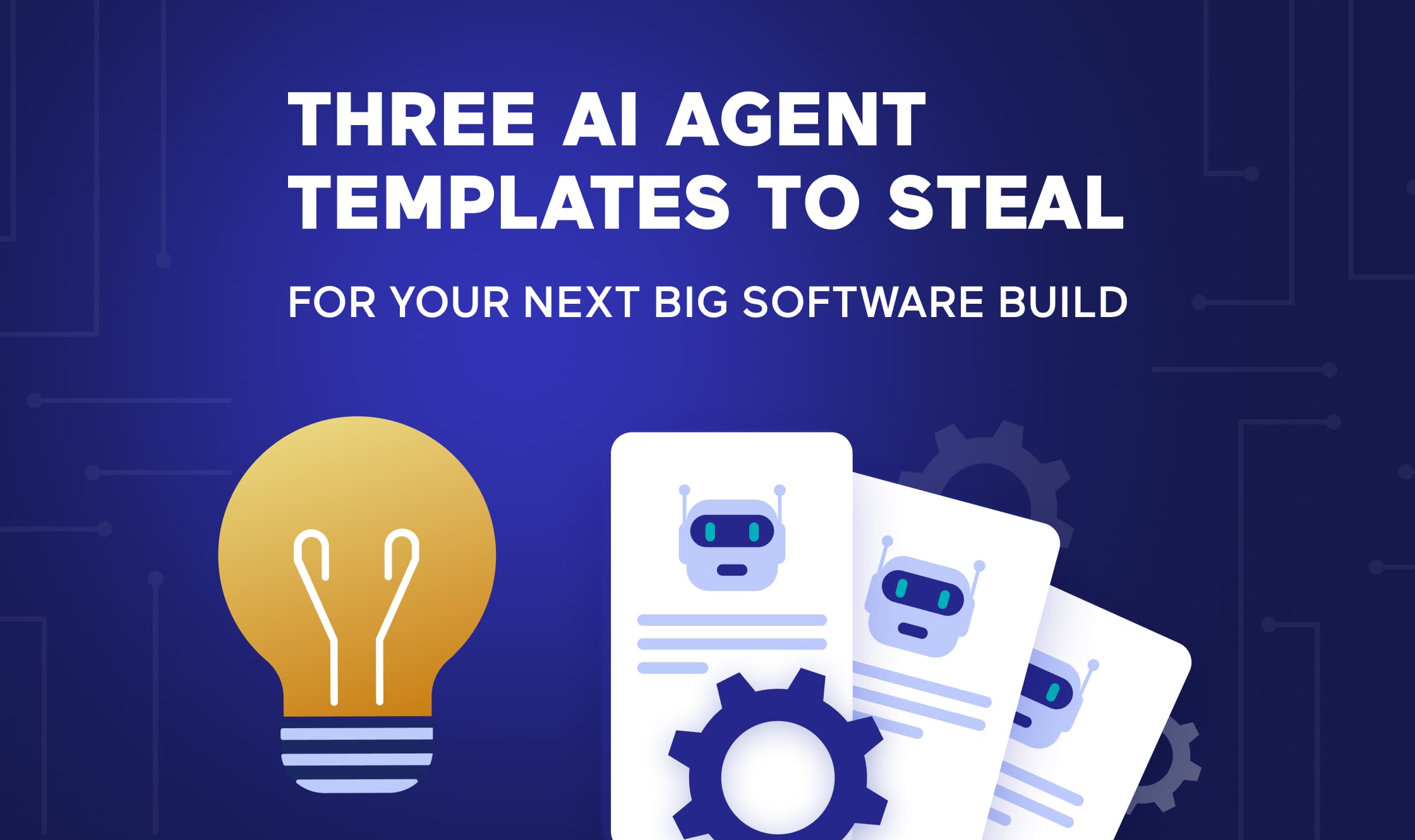
If you’re a founder trying to bring a product to life without a technical co-founder, you’re not alone. And for the first time in history, tools like Cursor, Windsurf, Lovable, Bolt, and even ChatGPT-based coding assistants make it feel possible to get surprisingly far on your own.
You can spin up beautiful screens in a few prompts. Write backend logic. Connect ingestion pipelines. Prototype workflows. Create rich interfaces. And trigger multi-step tasks and long-running processes.
For someone who understands their industry inside and out as a domain expert, this feels liberating. You finally have a way to build the product you’ve always envisioned without needing to learn computer science or wait for a developer to return your emails.
But there’s a hidden dynamic these tools create, and every founder eventually runs into it. The more capable these assistants become, the easier it is to assume you’re building a “real product,” when in reality you’re building something that resembles software but does not behave like software built by experienced engineers.
This post isn’t meant to scare you off from using AI tools. They’re powerful, and they give you a head start no generation of founders has ever had. But they also blur the line between “prototype” and “platform,” and they make it easy to miss the engineering choices that matter most in the long run.
Let’s talk about why that happens, how it shows up, and what decisions you need to make before you pour more time or money into a codebase that isn’t prepared for real usage.
Why non-technical founders can build faster than ever – and why that speed hides deeper risks
The last twelve months have changed the founder landscape. An attorney can build a document workflow system. A consultant can build a CRM. A medical expert can build a symptom-tracking platform. A marketer can build an internal automation tool that rivals full SaaS products and is tailored exactly to their needs.
That’s a real shift. But with that speed comes a structural problem. You can generate the parts.
You can generate the features. You can generate the UI. But you can’t generate the architecture and solid foundation.
Architecture is where long-term stability lives. It’s also where AI tools are weakest.
When you don’t have an engineering background or a technical co-founder, you don’t know what decisions need to be made early to stop complexity from becoming unmanageable later. It’s not your fault. You’re trying to ship something that helps people, not get a database design degree.
But those missing decisions show up eventually, and always at the worst possible moment.
The moment everything feels “done”… but nothing feels stable
If you’ve been building without a technical partner, you might recognize this pattern.
You’ve spent months building after your day job. Everything runs when you test it. The features look deep and impressive. You’re proud of what you’ve pulled off.
Then the issues start creeping in:
- A change in one part of the app causes breakage somewhere completely unrelated.
- Pipelines slow to a crawl.
- Background tasks stop firing consistently.
- Ingestion steps work one day and fail the next.
- Debugging becomes trial and error rather than a precise process.
- LLM-generated code starts contradicting earlier LLM-generated code.
- Your repo becomes a maze that even you can’t navigate anymore.
At that point, founders usually reach out for help. They assume the system just needs more polish or a round of refactoring.
That’s almost never the case.
The underlying issue is structural. And structural issues can’t be patched no matter what anyone tells you.
AI tools give you output, not an engineering discipline
Here’s the clearest way to understand the gap:
LLMs write code, but they don’t design systems. You might ask Windsurf to “add a workflow for document ingestion.” It does that correctly. Then you ask it to “add a worker that generates summaries.” It does that too. Then you ask it to “add a timeline visualization.” It will produce that as well.
But none of these tools understand:
- how the parts should relate to each other
- how data should flow consistently
- how versioning should be handled
- how concurrency should work
- where boundaries between components should live
- what belongs in the frontend versus backend
- how state should be managed
- how workflows should be isolated
- how to prevent one feature from stepping on another
Those are engineering skills. They require mental models, not just code generation.
When you don’t have someone in your corner making those decisions intentionally, you end up with a product that “kind of works” but slowly turns into a minefield or what we called in the past “spaghetti code”.
The blind spot: confusing a functional demo with real engineering
This is where most founders get caught off guard. They get a working demo that looks like progress, but it isn’t the same thing as a scalable foundation.
For example, you can generate a complex timeline visualization. But if the retrieval logic behind it is coupled to three different ingestion paths, you’ll never be able to update it safely.
You can produce rich templates and structured outputs. But if the pipeline invoking them runs through Temporal without coherent workflow boundaries, latency will get worse with each new feature.
You can build a CRM-like interface in a weekend. But if the data model grows in an ad hoc way, you’ll hit a point where no one can safely modify it.
You can build impressively deep domain logic. But if the code is scattered across random directories based on whatever prompt you used that night, no senior engineer will take responsibility for maintaining it.
This mismatch is not a failure. It’s exactly what happens when you build without technical supervision.
We can see in each prototype that is shown to us that it captures your intent. But it does not capture the engineering structure required to support that intent.
Why senior engineers often say “We need to rebuild this”
This is another point that surprises founders. They bring in an engineer to help, and the first reaction is often some version of, “I can’t safely maintain this. We need to start over.”
It is never what you want to hear, but here’s why it’s almost always the right call:
- Your codebase doesn’t follow a consistent pattern.
- The design decisions weren’t made by a human. They were made by an LLM responding to prompts.
- You can’t scale a system built on accidental structure.
- Every patch introduces new instability.
- The cost of salvaging the existing system often exceeds the cost of rebuilding it cleanly.
Engineers make this recommendation not because they want to rewrite things, but because patching a broken foundation only makes the situation worse and in two months you are going to have the same or worse headaches. If you’ve hit this point, it’s a sign your prototype has outgrown the tool that created it.
Your real product isn’t the code. It’s the knowledge you captured
This is the part founders forget, and the part that deserves more attention.
The true value of your MVP isn’t the repo. It’s the understanding encoded inside it. The workflows. The screens. The domain expertise. The business logic. The formatting rules. The user flows. The automation ideas. The way you want data to be interpreted and acted on.
Even if the codebase isn’t salvageable, everything you’ve built is still the best possible blueprint for a real engineering team.
You’ve already made the key decisions most founders struggle to communicate. You know what the product needs to do. You’ve stress-tested your ideas by building them. And you’ve built enough logic that a team could easily translate it into something stable and scalable.
That is not wasted effort. That is the foundation of the rebuild.
What a better path forward looks like
If you’re in this situation, here’s what we have seen consistently works
- Stop building in your AI tool. Freeze the codebase. Every additional change makes the system harder to understand.
- Bring in someone who can map what you built. Not to fix it, but to extract the product logic and architectural intent.
- Rebuild the foundation deliberately. This can be a traditional stack. It can also be a structured environment like Wippy, where workflows, agents, LLM calls, and business logic are isolated so growth doesn’t lead to collapse.
The right path depends on your vision, your timeline, and how complex your product is.
You don’t need to be embarrassed about how you got here
One of the recurring themes in our calls with founders is embarrassment. They feel like they “did it wrong” or that an engineer will judge the work they did.
But the truth is simple.
You did what every ambitious founder would do if they had your tools. You built the fastest version of your idea that modern technology allows. You validated workflows that would normally take months to prototype. You proved out demand before hiring a team.
Now you’re at the handoff point.
The next stage requires structure, not improvisation. And that is where a technical partner or a structured agent platform matters.
If this describes your current situation, we’re happy to help
If you’re a subject-matter expert who built your product using Cursor, Windsurf, Lovable, or another AI coding assistant, and you’ve reached the point where:
- the system feels unstable
- debugging feels impossible
- engineers won’t touch your repo
- you’re unsure whether to refactor or rebuild
- you want to keep momentum without throwing everything away
Just reach out.
I would be happy to review with you whether the foundation is salvageable, what a re-factor or rebuild would look like, and whether a structured runtime like Wippy or something else would save you months of development time and get you closer to the actual code writing as the subject-matter expert who knows your domain the best.
Building without a technical co-founder isn’t a mistake. It’s a strength, especially if you go deep with your domain expertise. You just need the right next step to turn your prototype into something real.



